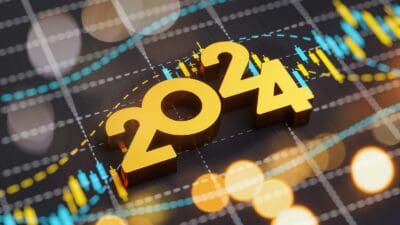There is always talk of stocks being ‘overvalued’. City analysts and market commentators seem to enjoy claiming that it is time to sell stocks ahead of the next big crash. And because it has been nearly ten years since the last major market collapse, there are more and more claims that the market is ‘overvalued’ coming out almost every day.
But for individual investors, these statements are not really much use. The market might be overvalued, but what about your own stock positions?
Well, several tell-tale red flags usually appear when a stock is overvalued and possibly reaching the full extent of any potential price gains.
Watch out for red flags
The first, and perhaps most important, red flag is when management is selling. A company’s management knows way more about its underlying business than any investor. Therefore, management’s share trading activity can be extremely telling about what managers think about the firm and its prospects.
Most the time, if managers believe a company’s shares look cheap, they will dip into the market themselves, using their hard-earned wages to buy a stake in the business and thereby benefit from the firm’s growth and success. However, if managers are cashing out it can be a sign that the company’s growth is stumbling. Following management trading activity can be an excellent way to tell if a company’s shares are over- or under- valued.
Watch for hype
The second way to tell if a company’s shares are overvalued is to keep an eye on the hype surrounding the business. If City analysts are all clamouring to raise their price targets, and investment bulletin boards are full of chatter about the business, there is an increased chance that the company’s share price will become disconnected from the fundamentals. In this scenario, it’s very easy for the shares to become significantly overvalued in a short space of time. Any investor who has some experience of trading on AIM will be aware of this problem.
Focus on the fundamentals
The third major red flag is connected to the last point. Specifically, if a company’s share price continues to charge higher, but the fundamentals show no sign of improvement, the shares can quickly become overvalued.
Valuing equities is not an easy job. Even some of the City’s most experienced analysts struggle to come up with an accurate valuation for companies. The problem is, valuation is not a precise science, and something that looks overvalued today may continue to rise in price.
That’s why we Fools are not overly concerned about trying to time the market. Long-term buy and hold investors don’t need to be too concerned about whether a business is overvalued because,over the long run, as long as the firm has a sound business model with a competitive advantage, returns are most likely to be positive, no matter what price you paid.
So overall, the above red flags may be helpful in helping you decide if a company’s shares are overvalued. But, even if they are, long-term investors should not feel pressured to act.






